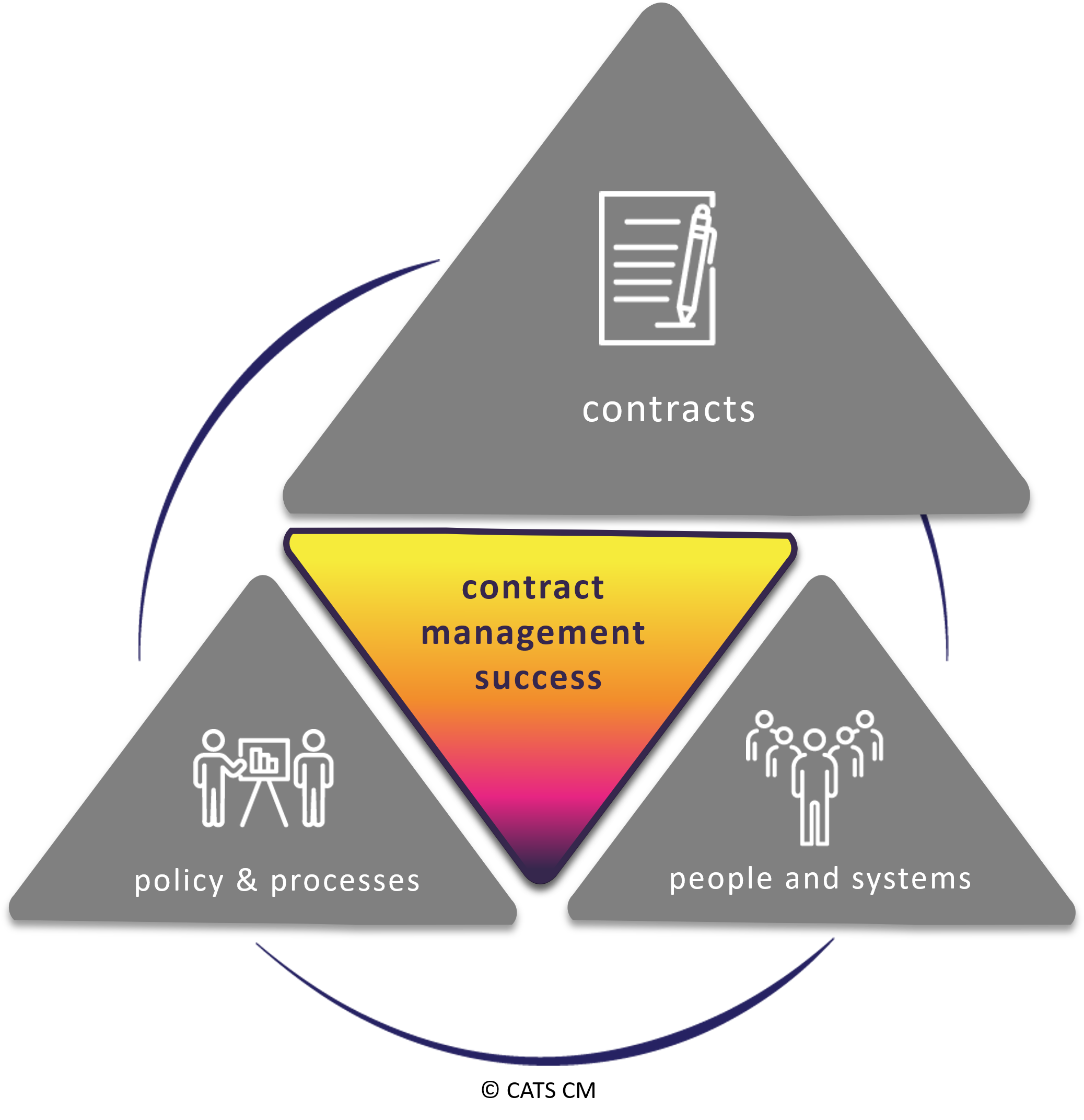In the series ‘Contract Management with CATS CM® in a nutshell’, I explain the guiding principles of our methodology. After having described the business case, effective contract management, and the contract management success factors, my previous two articles covered the aspects of policy and processes and people and systems. That means we’re ready to look at ‘contracts’. So, how would you describe contract creation and how do contracts contribute to the success of contract management?

Contract Creation
Both suppliers and clients lay the foundation for effective and efficient contract management during the proposal phase, the negotiation phase, and during the drafting of the contract. We call this the contract creation or pre-awarding phase of contract management. Through ensuring the timely involvement of contract managers in the drafting of the contracts and during the previous phases, contract management will get the attention it needs and deserves during the execution phase. By making the right agreements, the contract manager can manage the contract effectively and efficiently.
Even when setting up general procurement and sales conditions or templates for standardized contracts (or contract clauses), organizations have to make sure that the effects of these documents on contract management will be assessed.
The contract creation phase generates information and documentation that will be important for the execution of contract management. Apart from offering input to tendering, procurement, and sales teams, the contract manager may also ensure or monitor the registration of information and documentation.
For organizations required to issue public tenders, or suppliers that respond to public tenders, the content of the contract can be fixed early on in the process in the form of a draft contract attached to the request for proposal. Consequently, the client carries out several activities from the contract management process following the CATS CM® methodology for the first time in the early stages of the contract life cycle. Such a particular situation requires special attention when making the CATS CM® methodology organization specific.
Focal points
The focal points for contract management during contract creation depend, of course, on how the organization’s contract management process is structured. For a contract management process based on CATS CM®, consider the following focal points:
- Does the contract describe the contract objectives? And if not, have they been defined and documented within the organization?
- Are the contract relationships known and insightful, for example because contracts are part of the same process, and are these relationships sufficiently considered during the contract creation phase?
- Does contract performance contribute to achieving the contract objectives? Have measurable and unambiguous performance indicators been formulated?
- Does the consultation and reporting structure meet the desired monitoring and management of the contract during the execution phase?
- Have the specific statutory requirements (compliance) been sufficiently taken into account?
The contract manager involved in contract creation
The contract manager involved during contract creation may or may not be the same person as the contract manager appointed to handle the execution phase. The benefit of having the same contract manager involved in all phases will be obvious as this person already knows all the ins and outs of the agreements when the execution phase kicks off. At the same time, there is a risk that this person will be blind to certain issues due to overfamiliarity while a newly involved contract manager will be able to identify them.
In choosing to retain the same contract manager or to appoint another contract manager for the execution phase, an organization also ensures that this is a well-informed decision when it comes to the required competencies for the different phases. The various phases have different dynamics and thus may require different competencies. One particular contract manager may not have all these competencies, so this can also be a valid reason for having a different officer involved in the contract creation phase than the contract manager handling the contract execution process.
Summary
When both parties focus sufficiently on essential issues regarding contract management, such as a contract adjustment procedure, an escalation procedure, and unambiguous performance KPIs, the contract managers will get and maintain a grip on the contract in an efficient manner. When this focus is lacking or insufficient, the required amount of time spent on contract management will increase and its effectiveness decrease. The CATS CM® contract management process, and structured contract management scenarios, support organizations when they want to implement contract management in contract creation.
This is the sixth blog of the series ‘Contract Management with CATS CM® in a nutshell’, in which we guide you through an overview of our vision and methodology. Do you have any questions for Linda Tonkes and Gert-Jan Vlasveld, the authors of the book Contract Management with CATS CM® version 4? Then please send an email to questions@cats-cm.com!